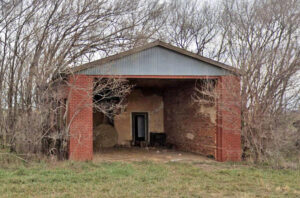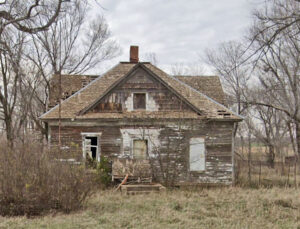Cleveland, Kansas, is an extinct town in Belmont Township of Kingman County.
A town company laid out the townsite in October 1879 along the Kingman-Medicine Lodge Stage Line. It was named after the city of Cleveland, Ohio. Located in the geographic center of Kingman County, area citizens hoped the fledgling town would become the county seat. However, the Atchison, Topeka & Santa Fe Railroad called in Carvel because shipping was getting confused between the Kansas town and one in Oklahoma.
A post office was established on January 2, 1880. The Cleveland Star was established in Cleveland in July 1881 by Conklin & Childs. That year, the settlers in the central portion of the county thought they were sufficiently numerous, with the assistance they could receive from the southern and eastern portions of the county, to have the county seat removed from Kingman to a more central point. With this objective, a petition was presented to the Board of Commissioners on October 4, 1881, asking that the question of relocating the county seat be submitted to a vote of the people. The petition was granted, and an election was scheduled for November 7, 1881.
The competitive points were Kingman and Dale City, about seven miles southeast of Kingman. Not wanting to lose the county seat, Kingman worked out a deal with the nearby town of Dale City to help swing the vote. The election result was that Kingman was declared the people’s choice by a majority of 85 votes.
In the meantime, Conklin & Childs sold the newspaper to Raymond & Myers on November 1, 1881. They continued to publish it in Cleveland until February 1, 1882, when they moved it to Kingman and changed its name to the Republican. In July 1882, Raymond & Myers sold the paper to E.H. Farnsworth. The Republican was a seven-column, four-page paper, Republican in politics, with a circulation of about 450.
A cyclone struck the town in 1885, destroying half a dozen houses and injuring several people.
In 1887, the town had a drugstore, merchants, a real estate office, a hotel, a post office, a livery and feed store, a loan agent, a mason, a blacksmith, a butcher, and a population of 80. That year, a prairie fire swept over a portion of the township.
The Hutchinson, Oklahoma, and Gulf Railroad arrived in Cleveland in 1890.
In 1910, it had a money order post office with one rural route, telephone connections, an express office, a grain elevator, a church, some good general stores, and a population of 75. Two years later, it gained another grain elevator and a large hotel on the corner of Broadway and Main Streets.
The town declined later, though. By the 1950s, it had only a school, a church, one elevator, and eight homes. The post office closed on September 30, 1957.
The school closed in 1958, followed by the church in 1967.
Today, the unincorporated community is called home to only a handful of people, the grain elevators, and a few scattered homes. It is served by Kingman-Norwich USD 331 public school district.
Cleveland is 6.5 miles south of Kingman.
©Kathy Alexander/Legends of Kansas, updated April 2024.
Also See:
Sources:
Blackmar, Frank W.; Kansas: A Cyclopedia of State History, Vol I; Standard Publishing Company, Chicago, IL 1912.
Fort Hays State University
Hutchinson News
Wikipedia



